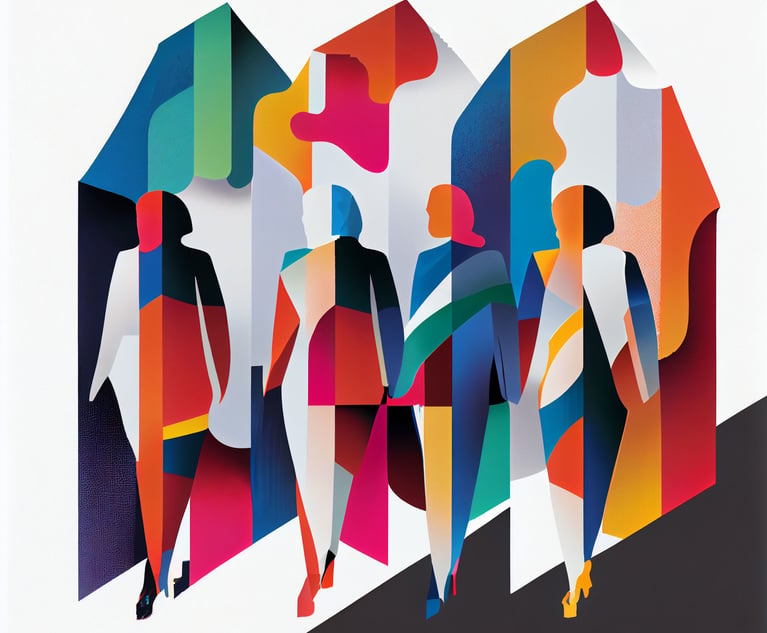California's Bar Exam: How Schools Fared and What Questions a New Analysis Didn't Answer
The 113-page report is unlikely to offer much guidance for law school deans, bar officials, students and lawmakers seeking answers for the decade-long decline in California bar exam pass rates.
December 29, 2018 at 08:20 AM
4 minute read

A state bar-commissioned study concludes that California law school students' undergraduate credentials and law school performance accounted for up to 50 percent of the decline in bar exam scores and passing rates between 2013 and 2017.
But much of the slump in pass rates on the July tests during that four-year period cannot be accounted for even after culling data from 11 participating American Bar Association-approved law schools, according to the report, dated Dec. 20 and conducted by Research Solutions Group.
The 113-page report is unlikely to offer much guidance for law school deans, bar officials, students and lawmakers seeking answers for the decade-long decline in California bar exam pass rates, which plummeted to 40.7 percent—a 67-year low—for the July 2018 sitting.
The bar has also released a breakdown of pass rates by schools for the July exam. All 25 of the Duke University Law School graduates who took the exam for the first time passed, setting the highest rate for any school with more than 10 test-takers. Ivy Leaguers from Yale (93 percent), Harvard (89 percent) and Columbia (88 percent) law schools also did well.
Other notable school results: Forty-nine of the 60 first-time test takers from Georgetown University Law Center (82 percent) passed. Fourteen of 22 first-time takers from the University of Pennsylvania Law School (64 percent) passed, and nearly all of the University of Virginia School of Law's first-time test takers passed: 20 of 24 students (83 percent).
Read the full California bar statistics report here:
Success rates for California-based ABA-accredited schools were more unsettling. Ninety-one percent of Stanford University Law School students passed the exam, making it the only school in the state to surpass the 90 percent pass rate. Eighty-six percent of University of California, Berkeley law students passed, as did 83 percent from University of California, Los Angeles School of Law.
Other law schools saw their success rates for first-time exam-takers drop to unusually low levels—69 percent at the University of California, Irvine and 75 percent at the University of California, Davis. Five schools saw a majority of their alumni fail the test.
Given the timing of the release of both reports and the holiday weekend, attempts to reach several law school deans for comment were not successful.
The Research Solutions Group report found that students' final law school grade-point averages had the strongest predictive relationship to their success on the bar exam, followed by their first-year law school GPAs, their Law School Admission Test scores and their undergraduate GPA. Mean LSAT scores of students taking the bar exam edged down from 159.4 in 2013 to 157.1 in 2017.
The report also noted that percentage of women and ethnic minorities taking the bar exam increased by six percentage points each during that four-year period. The average age of test-takers also rose from 28.9 in 2013 to 2017.
Older students logged slightly lower scores on the written portion of the exam, reducing their chances of passing by a small amount, the report found. The increased number of women taking the test had no correlation to success rates and “this study reconfirmed that racial/ethnic minorities with equivalent credentials to whites will tend to earn the same scores on the [bar exam] and have the same probability of passing,” the report concluded.
Read more:
'Frightening' Bar Exam Results, but No Plans to Lower Passing Score
Here's Who Passed California's July 2018 Bar Exam
Nearly Six in 10 Failed California's July 2018 Bar Exam
This content has been archived. It is available through our partners, LexisNexis® and Bloomberg Law.
To view this content, please continue to their sites.
Not a Lexis Subscriber?
Subscribe Now
Not a Bloomberg Law Subscriber?
Subscribe Now
NOT FOR REPRINT
© 2025 ALM Global, LLC, All Rights Reserved. Request academic re-use from www.copyright.com. All other uses, submit a request to [email protected]. For more information visit Asset & Logo Licensing.
You Might Like
View All


Build It and They Will Come: Tips to Market Your Practice as a Junior Attorney
6 minute read
The 'Biden Effect' on Senior Attorneys: Should I Stay or Should I Go?
9 minute readTrending Stories
- 1Settlement Allows Spouses of U.S. Citizens to Reopen Removal Proceedings
- 2CFPB Resolves Flurry of Enforcement Actions in Biden's Final Week
- 3Judge Orders SoCal Edison to Preserve Evidence Relating to Los Angeles Wildfires
- 4Legal Community Luminaries Honored at New York State Bar Association’s Annual Meeting
- 5The Week in Data Jan. 21: A Look at Legal Industry Trends by the Numbers
Who Got The Work
J. Brugh Lower of Gibbons has entered an appearance for industrial equipment supplier Devco Corporation in a pending trademark infringement lawsuit. The suit, accusing the defendant of selling knock-off Graco products, was filed Dec. 18 in New Jersey District Court by Rivkin Radler on behalf of Graco Inc. and Graco Minnesota. The case, assigned to U.S. District Judge Zahid N. Quraishi, is 3:24-cv-11294, Graco Inc. et al v. Devco Corporation.
Who Got The Work
Rebecca Maller-Stein and Kent A. Yalowitz of Arnold & Porter Kaye Scholer have entered their appearances for Hanaco Venture Capital and its executives, Lior Prosor and David Frankel, in a pending securities lawsuit. The action, filed on Dec. 24 in New York Southern District Court by Zell, Aron & Co. on behalf of Goldeneye Advisors, accuses the defendants of negligently and fraudulently managing the plaintiff's $1 million investment. The case, assigned to U.S. District Judge Vernon S. Broderick, is 1:24-cv-09918, Goldeneye Advisors, LLC v. Hanaco Venture Capital, Ltd. et al.
Who Got The Work
Attorneys from A&O Shearman has stepped in as defense counsel for Toronto-Dominion Bank and other defendants in a pending securities class action. The suit, filed Dec. 11 in New York Southern District Court by Bleichmar Fonti & Auld, accuses the defendants of concealing the bank's 'pervasive' deficiencies in regards to its compliance with the Bank Secrecy Act and the quality of its anti-money laundering controls. The case, assigned to U.S. District Judge Arun Subramanian, is 1:24-cv-09445, Gonzalez v. The Toronto-Dominion Bank et al.
Who Got The Work
Crown Castle International, a Pennsylvania company providing shared communications infrastructure, has turned to Luke D. Wolf of Gordon Rees Scully Mansukhani to fend off a pending breach-of-contract lawsuit. The court action, filed Nov. 25 in Michigan Eastern District Court by Hooper Hathaway PC on behalf of The Town Residences LLC, accuses Crown Castle of failing to transfer approximately $30,000 in utility payments from T-Mobile in breach of a roof-top lease and assignment agreement. The case, assigned to U.S. District Judge Susan K. Declercq, is 2:24-cv-13131, The Town Residences LLC v. T-Mobile US, Inc. et al.
Who Got The Work
Wilfred P. Coronato and Daniel M. Schwartz of McCarter & English have stepped in as defense counsel to Electrolux Home Products Inc. in a pending product liability lawsuit. The court action, filed Nov. 26 in New York Eastern District Court by Poulos Lopiccolo PC and Nagel Rice LLP on behalf of David Stern, alleges that the defendant's refrigerators’ drawers and shelving repeatedly break and fall apart within months after purchase. The case, assigned to U.S. District Judge Joan M. Azrack, is 2:24-cv-08204, Stern v. Electrolux Home Products, Inc.
Featured Firms
Law Offices of Gary Martin Hays & Associates, P.C.
(470) 294-1674
Law Offices of Mark E. Salomone
(857) 444-6468
Smith & Hassler
(713) 739-1250






